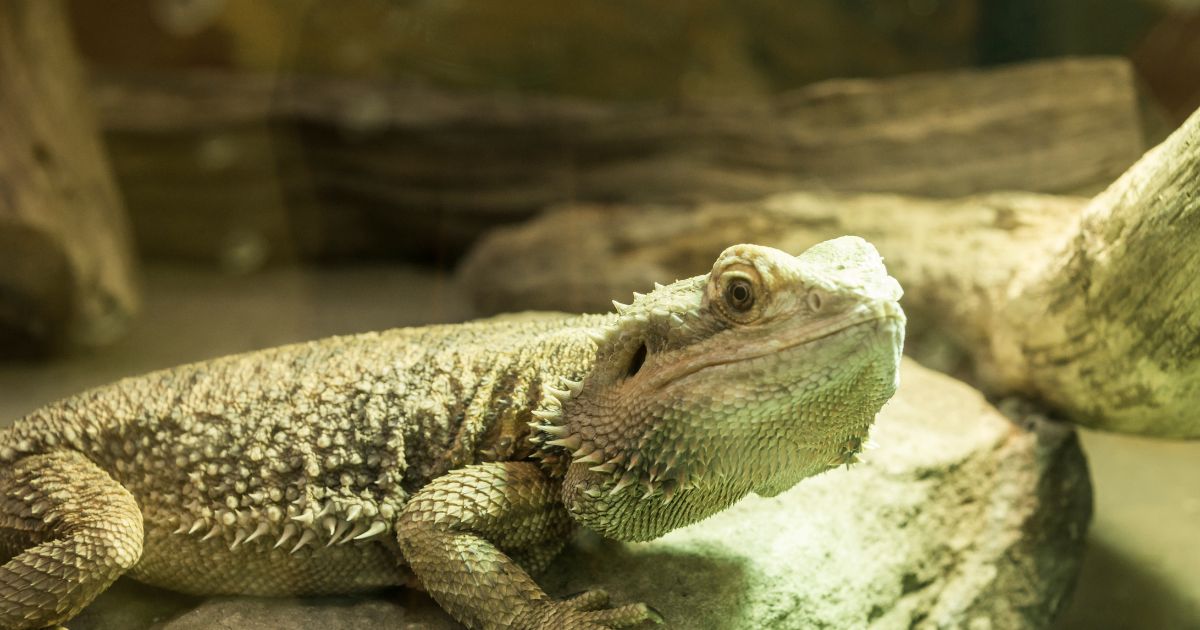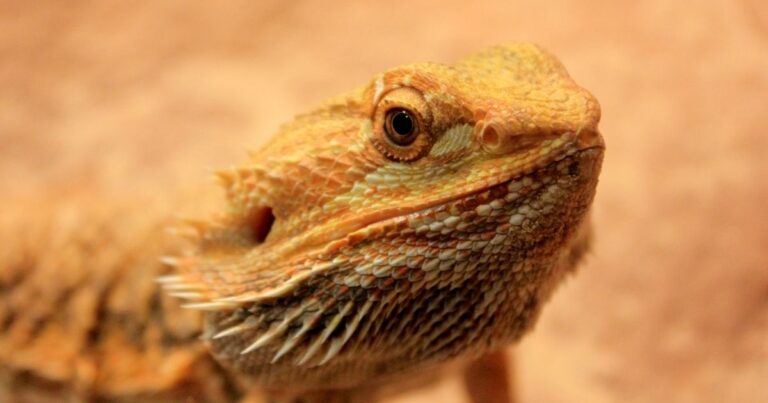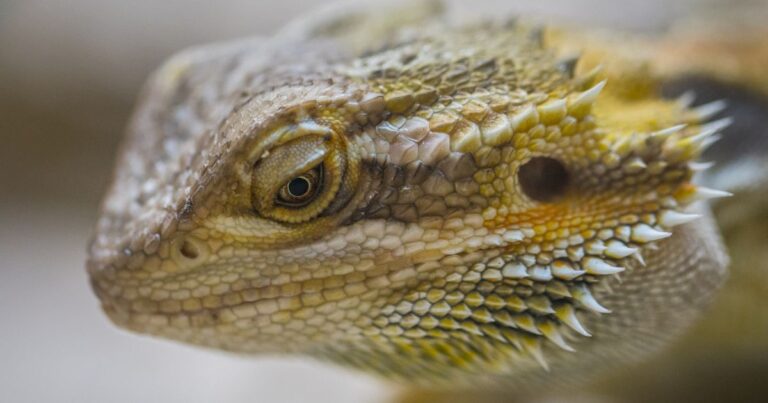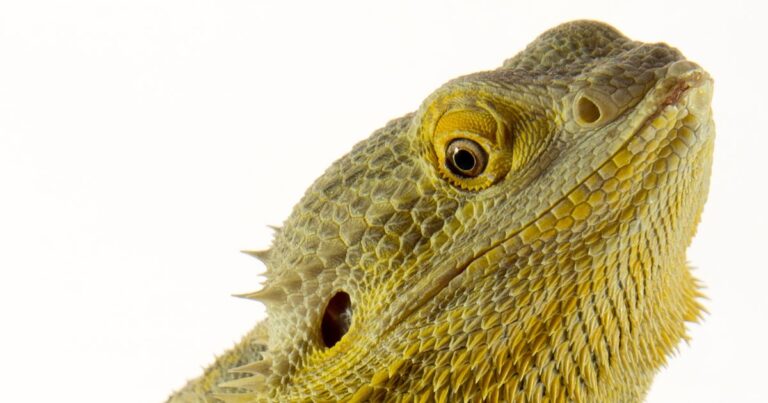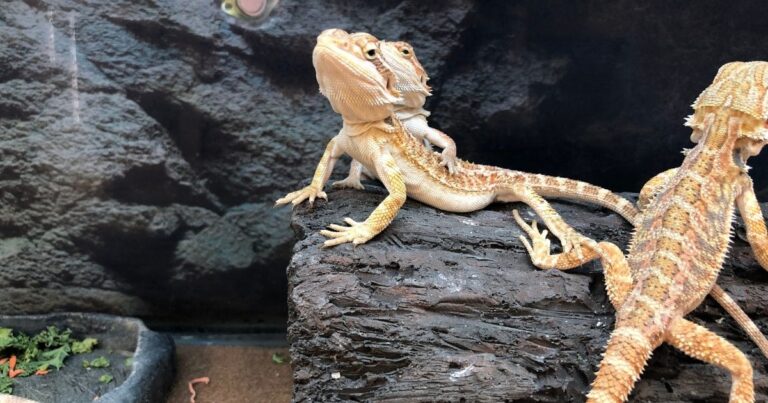Myth: Bearded dragons do not require a humid environment
Think bearded dragons live in bone-dry deserts? Think again! Uncover the truth about their humidity needs and why getting it right is crucial for your scaly buddy’s health. Busting the myth that bearded dragons do not require a humid environment
Table of Contents
Summary Table: Myth: Bearded dragons do not require a humid environment
| Section | Key Points |
|---|---|
| The Myth and its Origin | Bearded dragons are from arid regions of Australia, leading to the belief they prefer dry environments. |
| Why People Believe the Myth | The myth is based on the bearded dragon’s natural habitat, leading many to recreate similar conditions in captivity. |
| The Truth about Bearded Dragon’s Humidity Needs | Bearded dragons need some humidity (around 20-40%) for hydration and shedding. |
| The Implications of the Myth | Believing in the myth can lead to dehydration, shedding difficulties, respiratory issues, and skin infections. |
| The Problem with High Humidity | High humidity can cause respiratory infections, skin infections, and create a breeding ground for bacteria and fungi. |
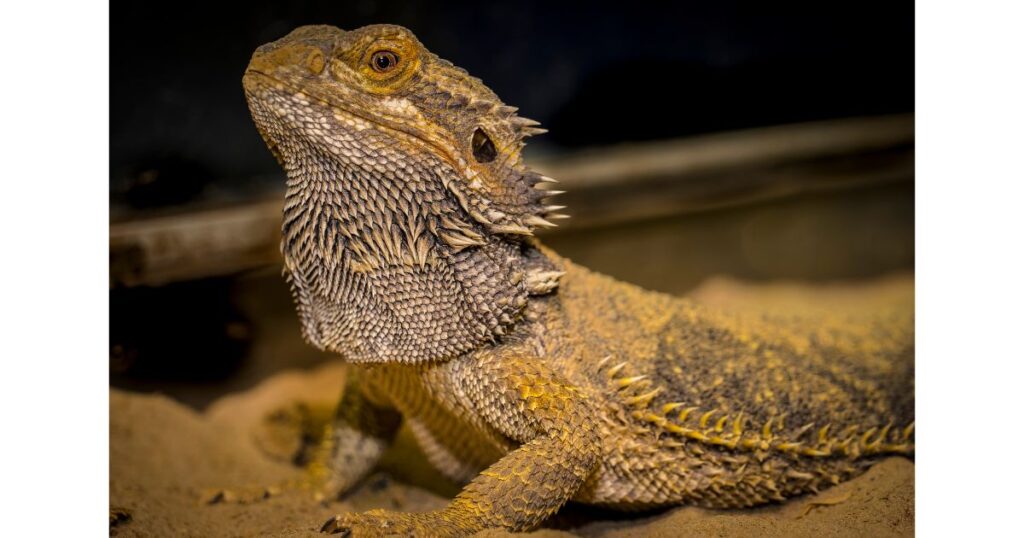
Introduction
Hello, fellow dragon enthusiasts! Today, we’re going to debunk a myth that’s been floating around in the bearded dragon community. You’ve probably heard it before: “Bearded dragons don’t need a humid environment.” This statement, while partially true, doesn’t paint the whole picture. So, let’s set the record straight and explore the real deal about bearded dragons and their humidity needs.
While bearded dragons don’t need high humidity, a certain level of humidity is necessary for their well-being.
In the world of bearded dragon care, there are many myths and misconceptions. Some are harmless, while others can lead to improper care and health issues for our scaly friends. The myth about bearded dragons not needing a humid environment falls into the latter category. It’s a misunderstanding that can lead to dehydration and shedding problems.
So, buckle up, dragon lovers! We’re about to embark on a myth-busting journey. By the end of this post, you’ll have a better understanding of your bearded dragon’s humidity needs. And with knowledge comes the power to provide the best care for your scaly buddy.
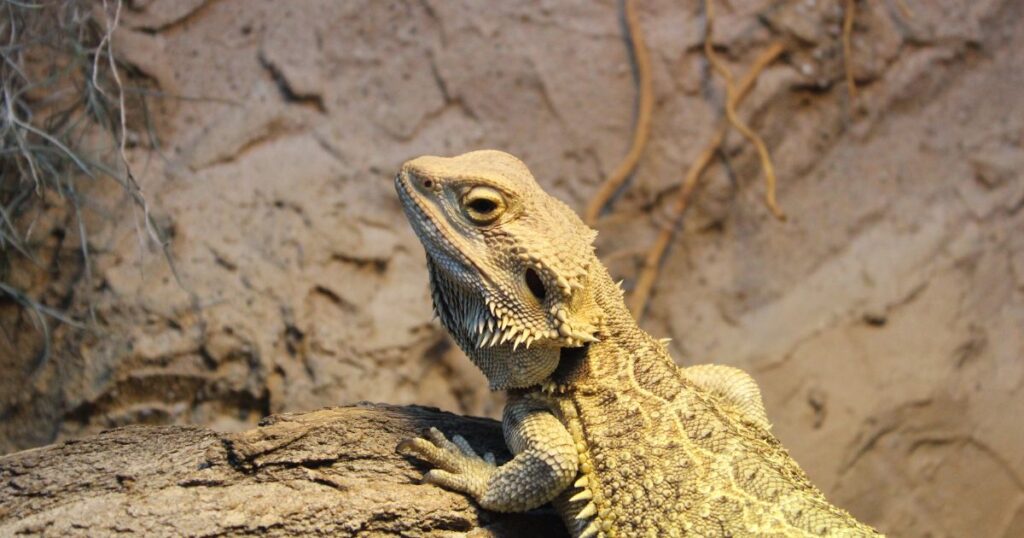
The Myth and its Origin
| Key Points |
|---|
| Bearded dragons originate from arid regions of Australia. |
| This has led to the belief that they prefer dry environments. |
| The myth is a half-truth taken as the whole truth. |
The myth that bearded dragons don’t require a humid environment likely stems from their natural habitat. Bearded dragons hail from the arid regions of Australia, where humidity levels are typically low. This has led many to believe that these scaly friends prefer a dry environment, completely devoid of humidity. However, this is a classic case of a half-truth being taken as the whole truth.
It’s easy to see how this myth originated. After all, when we think of deserts, we think of dry, arid landscapes. And it’s true that bearded dragons are adapted to such conditions. They have evolved to survive in an environment with low humidity levels. But that doesn’t mean they don’t need any humidity at all.
The reality is that even deserts have some level of humidity. And bearded dragons, like all living creatures, need water to survive. They get some of this water from their diet, but they also absorb it from the air. So, while they don’t need a rainforest-like environment, they do need some humidity.
- Originated from the bearded dragon’s natural habitat.
- Misinterpretation of the desert conditions.
- Overgeneralization of the bearded dragon’s adaptability.

Why do People Believe the Myth
| Key Points |
|---|
| The myth is based on the bearded dragon’s natural habitat. |
| People want to recreate their pet’s natural environment as closely as possible. |
| Even deserts experience some level of humidity. |
The belief in this myth is understandable. After all, it’s based on the natural habitat of the bearded dragon. And let’s face it, who wouldn’t want to recreate their pet’s natural environment as closely as possible? However, it’s crucial to remember that while bearded dragons are indeed desert dwellers, even deserts experience some level of humidity.
People often believe this myth because it seems logical. If bearded dragons come from a dry environment, they must not need much humidity, right? Unfortunately, this line of thinking oversimplifies the complex needs of these fascinating creatures. It overlooks the fact that even in the desert, there are periods of higher humidity, especially at night and during certain seasons.
Furthermore, in captivity, bearded dragons often live in environments that are very different from their natural habitat. They may be exposed to artificial heating and lighting, which can affect humidity levels. Therefore, it’s important to monitor and adjust the humidity in their enclosure as needed, rather than relying on assumptions based on their natural habitat.
- Desire to recreate natural habitat.
- Misunderstanding of desert conditions.
- Lack of comprehensive care information.
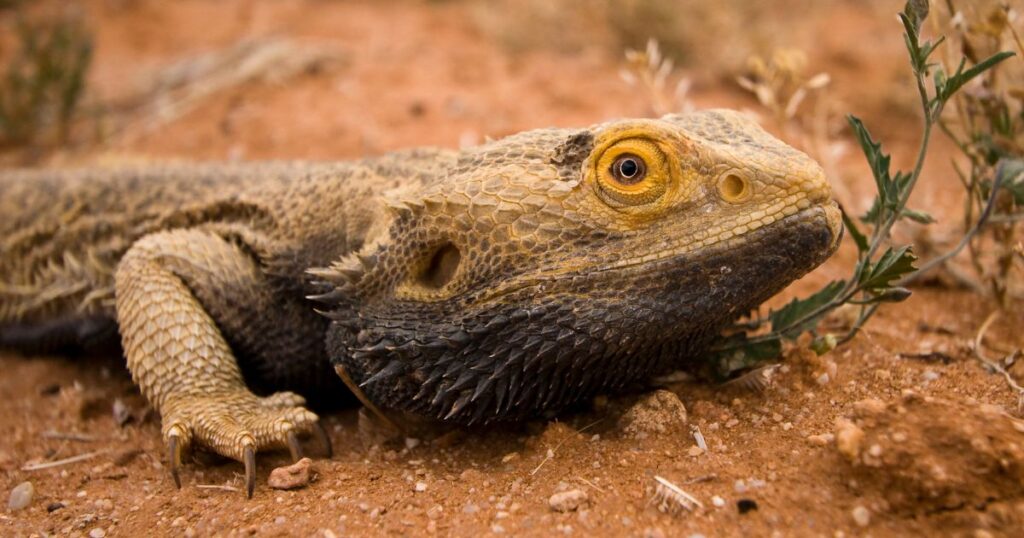
The Truth about Bearded Dragon’s Humidity Needs
| Key Points |
|---|
| Bearded dragons do need some humidity. |
| In their natural habitat, they experience humidity levels of around 20-40%. |
| A bone-dry environment isn’t ideal for bearded dragons. |
Here’s the truth: bearded dragons do need some humidity. Not a lot, mind you, but some. In their natural habitat, bearded dragons experience humidity levels of around 20-40%. This slight humidity helps them stay hydrated and aids in shedding. So, while they don’t need a tropical rainforest level of humidity, a bone-dry environment isn’t ideal either.
This doesn’t mean you should start misting your bearded dragon’s enclosure like a tropical terrarium. Too much humidity can be just as harmful as too little. It can lead to respiratory problems and skin infections. The key is to provide a moderate level of humidity that mimics the conditions in a bearded dragon’s natural habitat.
To achieve this, you can use a hygrometer to measure the humidity in your bearded dragon’s enclosure. If it’s too low, you can lightly mist the enclosure or add a shallow water dish. If it’s too high, you may need to increase ventilation or use a dehumidifier. The goal is to maintain a humidity level of around 20-40%, which is ideal for bearded dragons.
- Bearded dragons need some humidity.
- Humidity aids in hydration and shedding.
- Ideal humidity levels are around 20-40%.
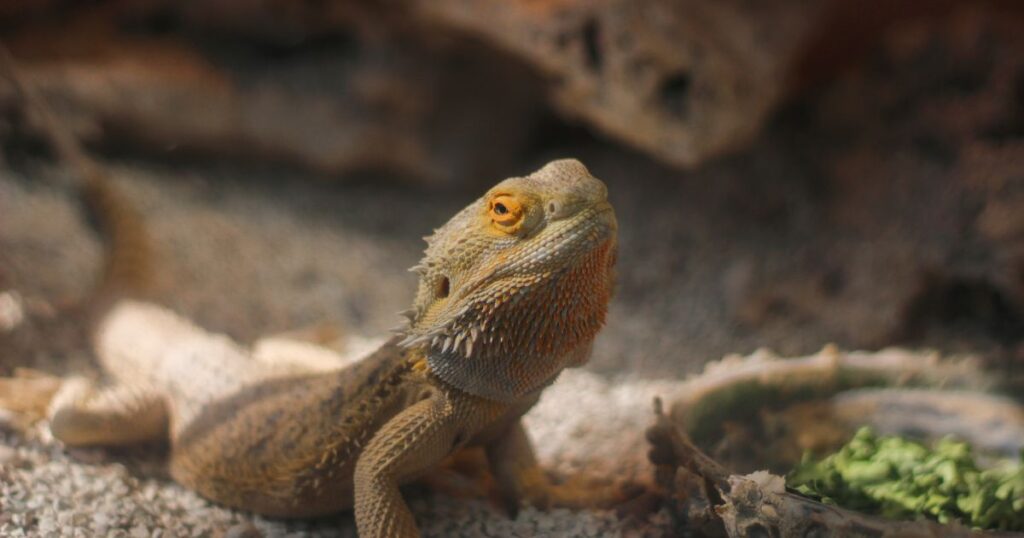
The Implications of the Myth
| Key Points |
|---|
| Believing in the myth can lead to improper care for your bearded dragon. |
| Too little humidity can lead to dehydration and difficulties in shedding. |
| Too much humidity can lead to respiratory issues and skin infections. |
Believing in this myth can lead to improper care for your bearded dragon. Too little humidity can lead to dehydration and difficulties in shedding. On the other hand, too much humidity can lead to respiratory issues and skin infections. Therefore, it’s crucial to strike a balance and provide your bearded dragon with the right amount of humidity.
Dehydration in bearded dragons can lead to a host of health problems, including kidney disease and gout. It can also make shedding more difficult, which can lead to retained shed on the tail, toes, and around the eyes. This can cause discomfort and, in severe cases, can lead to loss of digits or vision.
On the flip side, an overly humid environment can lead to respiratory infections and skin problems. Bearded dragons are not adapted to high humidity levels, and prolonged exposure can lead to health issues. Therefore, it’s important to monitor the humidity in your bearded dragon’s enclosure and adjust it as needed.
- Can lead to improper care.
- Potential for dehydration and shedding difficulties.
- Risk of respiratory issues and skin infections with high humidity.

The Problem with High Humidity
| Key Points |
|---|
| High humidity can lead to respiratory infections in bearded dragons. |
| It can also create a breeding ground for bacteria and fungi. |
| It’s essential to monitor the humidity levels in your bearded dragon’s enclosure. |
While we’re on the topic, let’s talk about the problems with high humidity. A highly humid environment can lead to respiratory infections in bearded dragons. It can also create a breeding ground for bacteria and fungi, leading to skin infections. Therefore, it’s essential to monitor the humidity levels in your bearded dragon’s enclosure and keep it within the recommended range.
Respiratory infections in bearded dragons can cause symptoms like wheezing, mouth breathing, and loss of appetite. They require veterinary treatment and can be serious if left untreated. Skin infections, on the other hand, can cause redness, swelling, and discomfort. They can also lead to more serious conditions like septicemia if not treated promptly.
High humidity can also lead to problems with your bearded dragon’s enclosure. It can cause mold and mildew to grow, which can be harmful to both your bearded dragon and you. It can also cause the substrate in the enclosure to become damp, which can lead to bacterial growth. Therefore, it’s important to keep the humidity at an appropriate level to maintain a healthy environment for your bearded dragon.
- Can cause respiratory infections.
- Creates a breeding ground for bacteria and fungi.
- Can lead to skin infections.
A highly humid environment can lead to respiratory infections in bearded dragons. It can also create a breeding ground for bacteria and fungi.
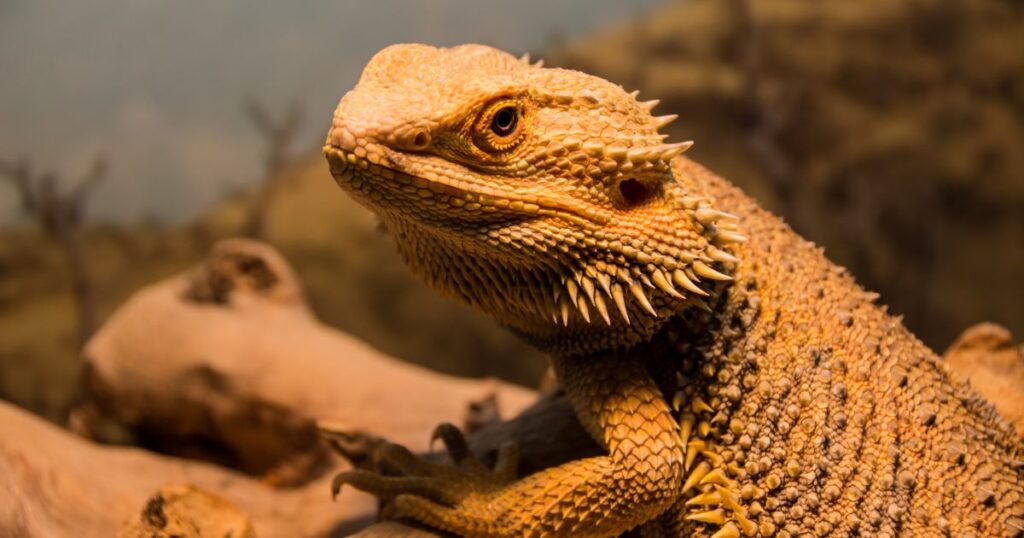
Conclusion
In conclusion, the myth that bearded dragons don’t require a humid environment is just that – a myth. While they don’t need high humidity, a certain level of humidity is necessary for their well-being. So, let’s put this myth to rest and provide our scaly friends with the care they deserve.
Understanding the needs of your bearded dragon is the first step towards providing them with a healthy and happy life. By debunking myths and misconceptions, we can ensure that our scaly friends receive the care they need. Remember, every bearded dragon is unique, and what works for one may not work for another. Always monitor your bearded dragon’s health and adjust their care as needed.
So, fellow dragon enthusiasts, let’s continue to learn and grow together. Let’s continue to bust myths and spread accurate information about bearded dragon care. After all, our scaly friends depend on us for their well-being. And there’s nothing more rewarding than seeing your bearded dragon thrive under your care.

Call to Action
Now that you know the truth about bearded dragons and humidity, it’s time to take action. Check the humidity levels in your bearded dragon’s enclosure and adjust them if necessary. Remember, a happy bearded dragon is a healthy bearded dragon. Let’s continue to learn and grow together in our journey of dragon care!
And don’t forget to share this post with your fellow dragon enthusiasts. Let’s spread the word and debunk this myth once and for all. Together, we can make a difference in the lives of bearded dragons everywhere.
This post is part of my Bearded Dragon Facts category and the Bearded Dragon Common Myths and Misconceptions.
Other posts of interest: Myth: Bearded dragons do not need to drink water regularly and Myth: Bearded dragons do not require regular cleaning of their enclosure
Disclaimer: This blog post is intended for informational purposes only and should not be used as a substitute for professional veterinary advice. Always consult with a qualified veterinarian for any health concerns regarding your bearded dragon.
Frequently Asked Questions
I live in a very humid area. Should I get a dehumidifier for my bearded dragon’s enclosure?
If you’re living somewhere that’s more “rainforest” than “desert”, a dehumidifier might be a good idea. High humidity can lead to respiratory issues and skin infections in bearded dragons. So, if your dragon’s enclosure is starting to feel like a steam room, it might be time to invest in a dehumidifier.
My bearded dragon’s enclosure is as dry as a bone. Is that bad?
While bearded dragons are desert dwellers, a bone-dry environment isn’t ideal. They do need some humidity to stay hydrated and aid in shedding. So, if your enclosure is drier than a cracker in the sun, it might be time to add a little moisture. A light misting or a shallow water dish can help increase the humidity.
How can I measure the humidity in my bearded dragon’s enclosure?
Great question! You can use a hygrometer to measure the humidity in your bearded dragon’s enclosure. It’s a handy little device that will help you keep the humidity levels just right. Remember, we’re aiming for a desert, not a swamp or a desert mirage!
I’ve been misting my bearded dragon’s enclosure daily. Is that too much?
It depends on how much you’re misting. A light misting can help increase the humidity, but you don’t want to turn the enclosure into a rainforest. If your bearded dragon starts asking for a raincoat, you might be overdoing it!
Remember, every bearded dragon is unique, and their care should be tailored to their individual needs. Always monitor your bearded dragon’s health and adjust their care as needed. And most importantly, enjoy the journey of caring for your scaly friend!
